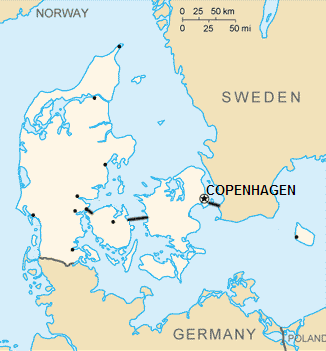NewsDesk @infectiousdiseasenews
In a follow-up on the Omicron variant BA.2 situation in Denmark, the Statens Serum Institut (SSI) reports the prevalence of the omicron variant BA.2 continues to increase in Denmark. It became dominant in week 2 and accounted for 69% in week 3. BA.2 is expected to account for up to 100% of infections in mid-February 2022.

The preliminary projections show that the growth rate for BA.2 is significantly higher than for BA.1. This equates to BA.2 being approximately 30% more contagious than BA.1.
This means that the emergence of BA.2 may lead to a steeper epidemic curve with a higher peak for the number of daily cases of infection. Similarly, BA.2 may postpone the time of the expected decline in infection until into February.
A new Danish study from SSI, the University of Copenhagen and DTU shows that BA.2 is more contagious than BA.1.
The study shows that if a person in your household is infected with BA.2, there is generally a 38% risk that another household member will be infected within the first week. If, on the other hand, the person is infected with BA.1, the risk is 29%.
The study is based on 8,541 households with 17,945 other residents in the period from 20 December to 18 January.
It also shows that the risk of becoming infected is highest for unvaccinated compared to vaccinated for both BA.1 and BA.2. However, vaccinated people have a relatively higher risk of becoming infected with BA.2 compared to BA.1.
SSI has prepared a risk assessment for the omicron variant BA.2
- Sweden: ‘The pandemic isn’t over, but it is moving into a new phase’
- Drug resistant Shigella infections in MSM on the rise in the UK
- New York City reports increases in sexually transmitted infections (STIs) in females
- Lockdowns had no noticeable effect on COVID mortality: Johns Hopkins study
- India Newswire: Rare chickenpox deaths in Karnataka, Leprosy situation
- New York City announces the availability of Paxlovid COVID-19 oral treatment
- Omicron: MIT study shows that dozens of mutations help the virus’ spike protein evade antibodies
- Argentina reports 1st case of Omicron sub-lineage BA.2
- Serbia COVID-19 update: 19K additional cases reported
- Raccoon roundworm, Baylisascaris procyonis infects Oklahoma toddler


One thought on “Denmark: Omicron BA.2 is expected to account for up to 100% of infections in mid-February 2022”